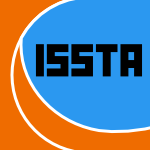18 papers:
 HT-2015-ChongDL #code review
HT-2015-ChongDL #code review- Did You Expect Your Users to Say This?: Distilling Unexpected Micro-reviews for Venue Owners (WHC, BTD, EPL), pp. 13–22.
 DocEng-2014-HailpernVD #how #named #what
DocEng-2014-HailpernVD #how #named #what- Pagination: it’s what you say, not how long it takes to say it (JMH, NDV, MD), pp. 147–156.
 CHI-2014-MasseyTTW #file system #question #what
CHI-2014-MasseyTTW #file system #question #what- PIM and personality: what do our personal file systems say about us? (CM, ST, CT, SW), pp. 3695–3704.
 SCSM-2014-TurnerH #network #social #what
SCSM-2014-TurnerH #network #social #what- What Does Your Profile Picture Say About You? The Accuracy of Thin-Slice Personality Judgments from Social Networking Sites Made at Zero-Acquaintance (MT, NH), pp. 506–516.
 CHI-2013-Shirali-ShahrezaPBG #interactive #mobile
CHI-2013-Shirali-ShahrezaPBG #interactive #mobile- SeeSay and HearSay CAPTCHA for mobile interaction (SSS, GP, RB, YG), pp. 2147–2156.
 ISSTA-2012-CoughlinCDS #source code #what
ISSTA-2012-CoughlinCDS #source code #what- Measuring enforcement windows with symbolic trace interpretation: what well-behaved programs say (DC, BYEC, AD, JGS), pp. 276–286.
 CSCW-2011-GergleC #collaboration #eye tracking #mobile #using #what
CSCW-2011-GergleC #collaboration #eye tracking #mobile #using #what- See what I’m saying?: using Dyadic Mobile Eye tracking to study collaborative reference (DG, ATC), pp. 435–444.
 CSMR-2010-NadiHM #predict #set #using
CSMR-2010-NadiHM #predict #set #using- Does the Past Say It All? Using History to Predict Change Sets in a CMDB (SN, RCH, SM), pp. 97–106.
 CHI-2009-BaoG #what
CHI-2009-BaoG #what- What’s “this” you say?: the use of local references on distant displays (PB, DG), pp. 1029–1032.
 ITiCSE-2008-ChinnV #gender #student #what
ITiCSE-2008-ChinnV #gender #student #what- What students say about gender in hiring software professionals (DC, TV), p. 344.
 CHI-2007-KitturSPC #coordination #wiki
CHI-2007-KitturSPC #coordination #wiki- He says, she says: conflict and coordination in Wikipedia (AK, BS, BAP, EHC), pp. 453–462.
 SIGIR-2006-FrankowskiCSTR #privacy #risk management #what
SIGIR-2006-FrankowskiCSTR #privacy #risk management #what- You are what you say: privacy risks of public mentions (DF, DC, SS, LGT, JR), pp. 565–572.
 SIGMOD-2004-GuoLRG #consistency #how #sql
SIGMOD-2004-GuoLRG #consistency #how #sql- Relaxed Currency and Consistency: How to Say “Good Enough” in SQL (HG, PÅL, RR, JG), pp. 815–826.
 HPCA-2003-MemikRM
HPCA-2003-MemikRM- Just Say No: Benefits of Early Cache Miss Determinatio (GM, GR, WHMS), pp. 307–316.
 CSEET-1999-McMillanR #re-engineering #student #what
CSEET-1999-McMillanR #re-engineering #student #what- What Leading Practitioners Say Should be Emphasized in Students’ Software Engineering Projects (WWM, SR), pp. 177–185.
 CHI-1998-WalkerFFMH #email #interface #what
CHI-1998-WalkerFFMH #email #interface #what- What can I say? Evaluating a Spoken Language Interface to Email (MAW, JF, GDF, CM, DH), pp. 582–589.
 SIGMOD-1997-CareyK #exclamation #on the #sql
SIGMOD-1997-CareyK #exclamation #on the #sql- On Saying “Enough Already!” in SQL (MJC, DK), pp. 219–230.
 ICSE-1994-BrodmanJ #case study #experience #what
ICSE-1994-BrodmanJ #case study #experience #what- What Small Business and Small Organizations Say About the CMM: Experience Report (JGB, DLJ), pp. 331–340.
 HT-2015-ChongDL #code review
HT-2015-ChongDL #code review DocEng-2014-HailpernVD #how #named #what
DocEng-2014-HailpernVD #how #named #what CHI-2014-MasseyTTW #file system #question #what
CHI-2014-MasseyTTW #file system #question #what SCSM-2014-TurnerH #network #social #what
SCSM-2014-TurnerH #network #social #what CHI-2013-Shirali-ShahrezaPBG #interactive #mobile
CHI-2013-Shirali-ShahrezaPBG #interactive #mobile ISSTA-2012-CoughlinCDS #source code #what
ISSTA-2012-CoughlinCDS #source code #what CSCW-2011-GergleC #collaboration #eye tracking #mobile #using #what
CSCW-2011-GergleC #collaboration #eye tracking #mobile #using #what CSMR-2010-NadiHM #predict #set #using
CSMR-2010-NadiHM #predict #set #using CHI-2009-BaoG #what
CHI-2009-BaoG #what ITiCSE-2008-ChinnV #gender #student #what
ITiCSE-2008-ChinnV #gender #student #what CHI-2007-KitturSPC #coordination #wiki
CHI-2007-KitturSPC #coordination #wiki SIGIR-2006-FrankowskiCSTR #privacy #risk management #what
SIGIR-2006-FrankowskiCSTR #privacy #risk management #what SIGMOD-2004-GuoLRG #consistency #how #sql
SIGMOD-2004-GuoLRG #consistency #how #sql HPCA-2003-MemikRM
HPCA-2003-MemikRM CSEET-1999-McMillanR #re-engineering #student #what
CSEET-1999-McMillanR #re-engineering #student #what CHI-1998-WalkerFFMH #email #interface #what
CHI-1998-WalkerFFMH #email #interface #what SIGMOD-1997-CareyK #exclamation #on the #sql
SIGMOD-1997-CareyK #exclamation #on the #sql ICSE-1994-BrodmanJ #case study #experience #what
ICSE-1994-BrodmanJ #case study #experience #what









